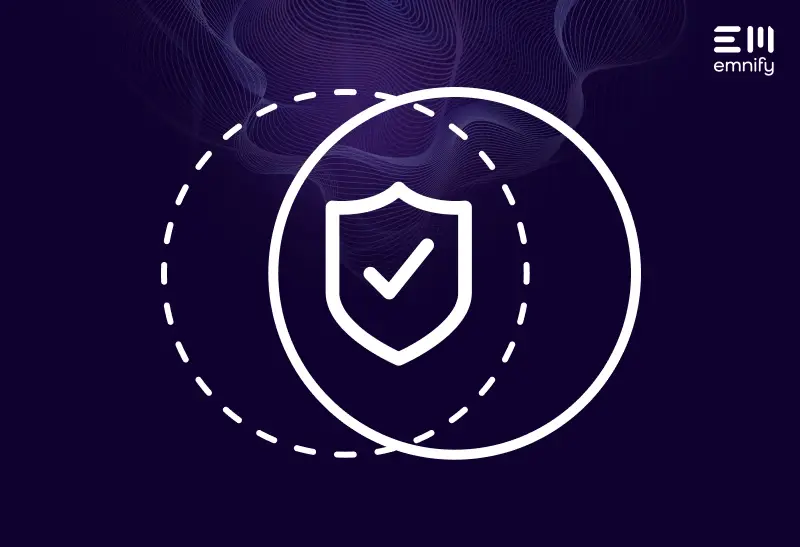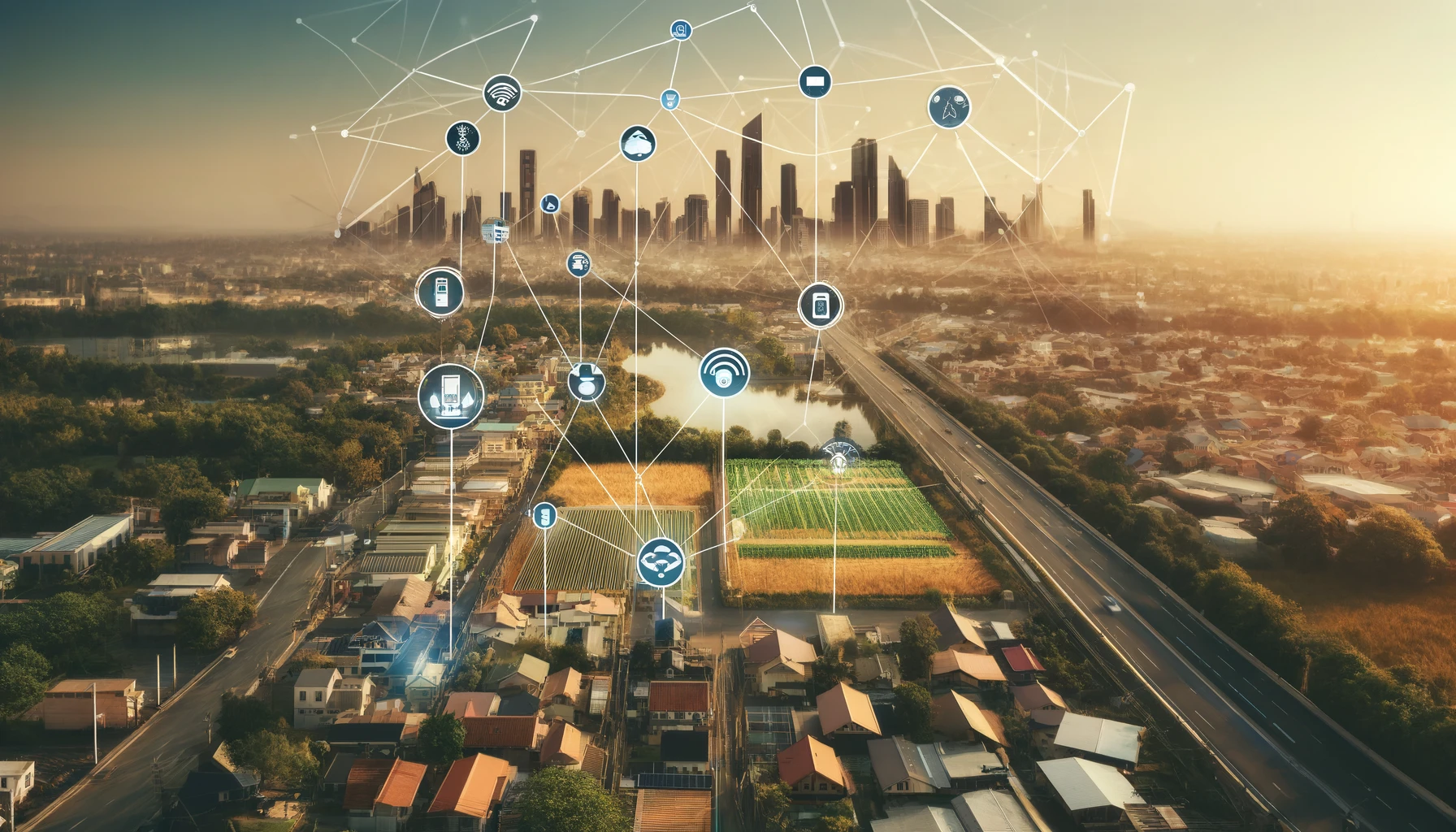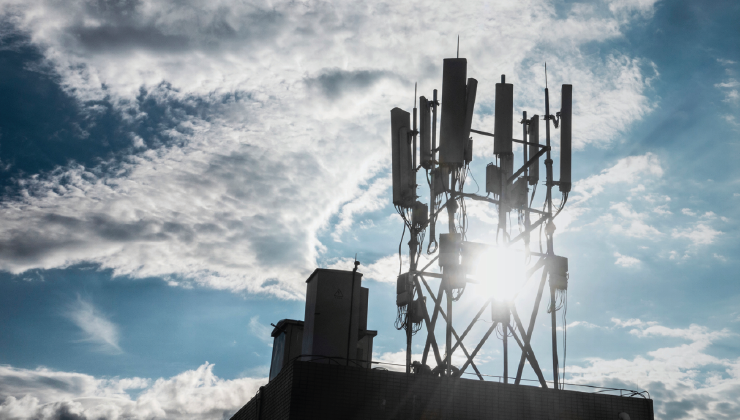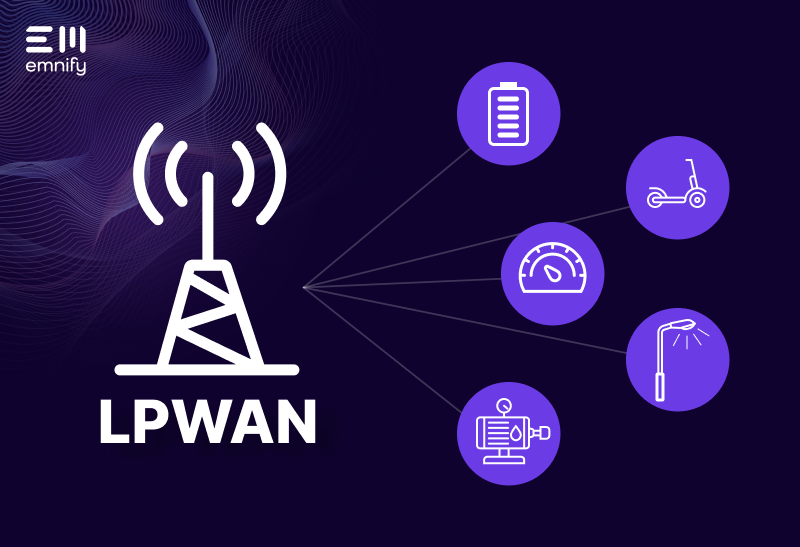

In common usage, “redundancy” isn’t necessarily a good thing. It means something isn’t needed. But in engineering, redundancy is critical—a redundant component or function serves as a backup in case something crucial fails, so the system can continue operating or quickly be restored.
Network redundancy is the principle of using backup network resources to minimize or prevent downtime if there’s a power outage, hardware malfunction, human error, system failure, or cyber attack. It involves running alternative instances of core network services and building duplicate network infrastructure.
Basically, network redundancy ensures there are multiple pathways data transmissions can take through your network. If one path fails or is unavailable, there’s always an alternative path from one network entity to another.

With cellular networks, network redundancy also means being able to connect to multiple Mobile Network Operators in the same country. Using the right technology, this redundancy enables your devices to connect to the best signal wherever you deploy.
The more redundancy your network has, the less risk network failures pose to your organization and your services. Your network doesn’t depend on any one component or function because there are other resources on standby. If one piece goes down, it gets replaced—instead of bringing the entire network down with it.
Whether your organization chooses to operate your own network or use an IoT communication platform like emnify, it’s worth understanding how network redundancy works and what kinds of redundancies you’ll want to plan for.
In this guide, we’ll cover:
- Why network redundancy is critical in IoT
- Geographic redundancy
- Software redundancy
- Network operator redundancy
- Network redundancy models
- The cost of network redundancy
For starters, let’s talk about why network redundancy matters in the Internet of Things.
Why network redundancy is critical for the Internet of Things
For most enterprise organizations, a single hour of network downtime costs $300,000 or more. (A 2016 study found that a single minute of unplanned downtime could cost upwards of $17,000.) Every minute your services are offline, you’re losing thousands of dollars, damaging your brand’s reputation, and frustrating your customers. In business-to-business applications, your outages can damage your customers’ revenue and reputation as well—because your downtime becomes their downtime.
That’s why redundancy is an essential component of the Internet of Things. If you have a backup plan for every failure, you can maximize service availability and reduce the impact of network-related problems.
Who’s to blame when your device loses connectivity?
Your product needs an Internet connection to do what it was designed to do. And regardless of what causes a network failure, the end-user probably isn’t going to blame the cellular carrier, a third-party data center, or the manufacturer of a specific component. They’re going to blame you. Because your product isn’t working the way it’s supposed to.
This is often also true if your application relies on a faulty network the customer provides. Sharing a WiFi connection with your customers’ other devices opens the door to greater IoT security risks, which is one of the reasons cellular connectivity is so appealing in IoT. Cellular IoT also gives you more power to ensure you can maintain a reliable Internet connection. You either need to heavily invest in network infrastructure, or find an Infrastructure-as-a-Service (IaaS) provider you can trust to deliver the connectivity your customers need.
You can (and should) build redundancy into your application, but you’ll also want to look for connectivity providers that design with network redundancy in mind.
Geographic redundancy
Network infrastructure has to occupy physical space. Data centers have to live somewhere. For businesses relying on in-house infrastructure, this creates some challenges.
What happens when your data center loses power? Or if there’s a natural disaster that damages your equipment? Or there’s a cybersecurity threat? Putting all your resources in one geographic location creates significant risk for potential network failures. It can also increase latency as you deploy further away from your data center (the network signals have to travel farther).
IaaS providers and enterprise-level companies use availability zones to create geographic redundancy. Each availability zone can contain multiple data centers, and the network resources can be shared across zones. They can use duplicate instances of an availability zone to serve as a backup for another. This ensures that disasters, errors, failures, attacks, and other problems that occur in a single geographic location won’t create significant service disruptions.
If a data center or an entire availability zone goes down, there’s always a fallback in place in another location, so your users don’t even notice the disruption.
Software redundancy
Individual network functions can fail, too. Software redundancy ensures that if a network service encounters an error or is otherwise unavailable, there’s another microservice in place that can perform the same function. Microservices are a key ingredient of cloud native development, and they can reduce failure points within a network by ensuring that critical functions always have a backup.
This redundancy also allows software and platforms to receive updates without interrupting the services. You can update one microservice while another handles its responsibilities, and if there are no issues, the updated service can take over while the others receive their updates.
emnify’s cloud-native IoT communication platform uses microservices to manage:
- API
- Signaling
- Data processing
- Virtual networks
- Data Streamer
- Policies
- Analytics
- Charging
- Billing
Each of these core functions has multiple microservices simultaneously processing the data, so if one fails, another can take over with no interruption.
Network operator redundancy
With a traditional SIM card, your device can only connect to a specific network operator and the operators they have roaming agreements with. When you’re in your operator’s home country, you can only connect to their network. That means sometimes you have to tolerate a poor signal and disruptions in service. And when you roam, you’re always going to be stuck paying roaming fees on the data you use.
Additionally, when you need to deploy in a country where your carrier doesn’t have roaming agreements (or government regulations prevent permanent roaming), you have to get a new contract with another carrier, install new SIMs, potentially use new modems and components, and create multiple SKUs for the same product.
But SIM cards designed for IoT can give you more flexibility with redundant operators. emnify’s M2M SIMs use Multi-IMSI technology to select the network with the best signal or lowest data costs. It’s like having a single contract that gives you access to five home networks and five lists of roaming agreements. Our SIMs automatically select the International Mobile Subscriber Identity (IMSI) you need to connect to the best available network.
So suppose you have SIM cards from a German operator, and you’re roaming in the US. Due to technical problems, your German operator can’t connect you to a US network, and your devices don’t have service. With a Multi-IMSI SIM card, we can switch away from the faulty home operator and select a new profile that works where you are.
Network type redundancy
If your device is only compatible with NB-IoT networks or 5G networks, then it simply won’t have service in locations that don’t have this coverage. 5G, for example, is predominantly available in large metropolitan areas right now. If you plan to deploy in areas where carriers don’t offer 5G coverage, your device needs to be capable of connecting to other network types.
In many cases, carriers use previous generations of cellular network technologies as a fallback in areas where they don’t currently have more advanced coverage.
But your ability to rely on this redundancy depends on your cellular components, such as your SIM cards and modems. emnify’s SIM cards enable you to connect via 2G, 3G, 4G, LTE-M, or NB-IoT based on your use case.
Telecommunications interconnection redundancy
Cellular carriers use three different networks to interconnect their mobile networks:
- IPX: Internet Protocol Exchange
- GRX: General Packet Radio Service Exchange
- SS7: Signaling System No. 7
While SS7 is used to manage the attach signaling procedures between networks - GRX/IPX is used when a data connection is established. GRX was used for 2G/3G - now it is replaced / enhanced for all IP communication and called IPX.
emnify uses multiple carrier for SS7 and GRX/IPX to connect to their roaming partners - so even in case on of the carrier services has a maintenance window or network error - the device can still connect over the other carrier service.
Network redundancy models
There’s more than one way to build a reliable connection. And that means there’s more than one way to build in network redundancy. Here are some ways organizations and IaaS providers develop backup systems to create alternative network paths and keep their services online.
Active/Active
Active/Active architecture uses two instances with the same functionality and distributes the data across these instances, constantly keeping state information in sync. Any time an instance of a network is disrupted, the system will automatically switch them to another instance of the network.

emnify is deployed and distributed in multiple availability zones through AWS, so we use an active/active network layout that also distributes users geographically. This ensures that if a data center goes down, your service remains uninterrupted.
Active/Passive
Like an Active/Active architecture, an Active/Passive architecture using two instances - where one can serve as a backup. However, in an Active/Passive network, the copies are “passive.” They don’t run in sync with the active network, and they only start the service when the primary network resources fail.

This model uses less resources to operate, but it comes with a huge drawback: when you need the backups, the connections have to be reestablished, and the devices have to revert back to a previous state.
Dual Ring Network
In a ring network, all of the nodes (servers, databases, devices, etc.) are linked together in a circle. Each node connects to two adjacent nodes. A transmission from one node to another has to pass through every node in between. The problem with a ring network is that if a single node fails, it breaks the circle and prevents transmissions from reaching their destination. The data packets essentially hit a dead end when they reach the node that’s unavailable. (Think about a string of Christmas lights that stops working when one bulb goes out.)
A dual ring network creates an additional loop that allows transmissions to “turn around” within the loop. When data packets travel through the network and reach an unavailable node, they go back through the ring the other way until they reach the intended node.

Diverse Trunking
Trunking is the process of combining network links into a single connection to aggregate the speed of these links. A “trunk” can link switches or servers, and it can be software or hardware based. Diverse trunking is simply establishing a secondary trunk that facilitates the same connection. If the primary trunk is down or unavailable, the secondary one functions as a backup pathway through the network.

The cost of network redundancy in IoT
Network redundancy is expensive to build in house. The vast majority of businesses require 99.99 percent guaranteed uptime. (emnify meets this standard.) That’s hard to deliver at scale without a substantial investment in network infrastructure and services. For enterprise-level organizations, that investment can be worth it.
But it’s far more cost effective to use a software-as-a-service provider like emnify. We specialize in providing scalable connectivity, so you can use as much or as little data as you need, and you only pay for what you use. It’s like renting enterprise-level connectivity solution (and all the built-in network redundancy that comes with it) instead of building, maintaining, and upgrading it yourself.
Connect your IoT application with emnify
As a cloud communication platform for IoT, emnify provides everything your business needs to connect your applications to the cloud. Our SIM cards are compatible with more than 540 carriers in over 180 countries. No matter where in the world you deploy, our geographic redundancy enables us to keep your customers connected locally, so their data stays close to home, latency stays as low as possible, and there’s always a backup instance of another availability zone.
With emnify, every network function has multiple microservices that can take over the service at a moment’s notice--so your customers never experience interruptions. Thanks to our Multi-IMSI SIM cards, your devices also become network agnostic, so you’ll always connect to the best signal, instead of attaching to whatever’s available.
Want to learn more about emnify’s network redundancy?
Get in touch with our IoT experts
Discover how emnify can help you grow your business and talk to one of our IoT consultants today!
.png)
Kalliopi is a CS Manager, highly motivated at integrating different solutions and helping customers enable and facilitate their daily business.


